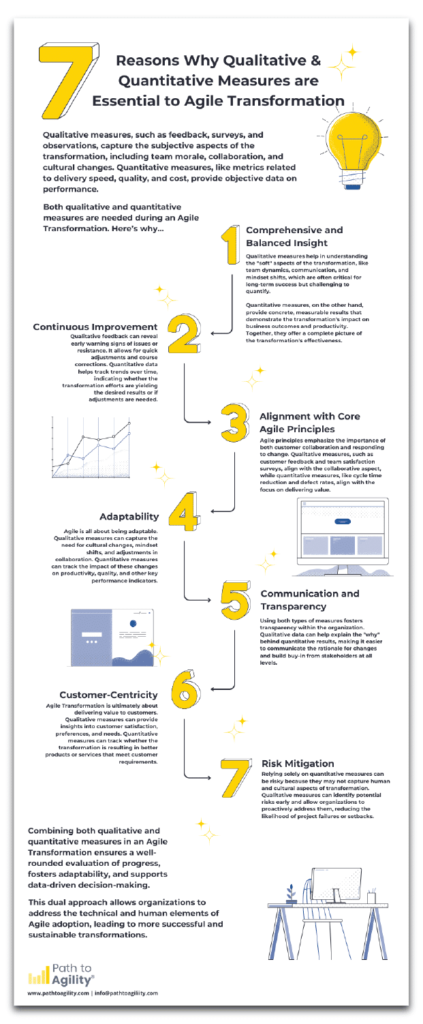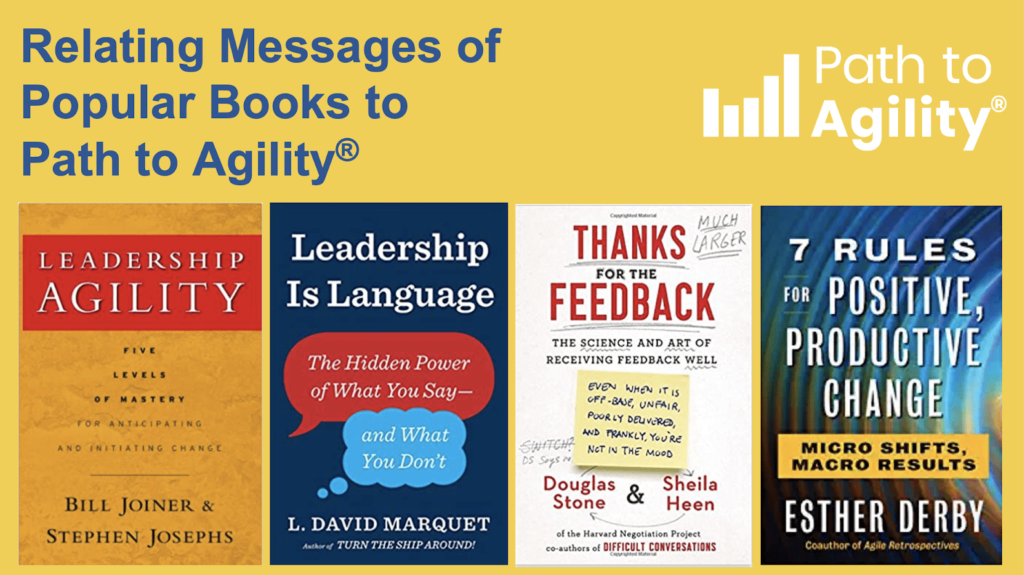Beyond AOP: Charting the Course to Lasting Change with Path to Agility

I recently had the privilege of tuning into a conversation and Q&A session featuring Dave Gipp, Enterprise Transformation Coach with Agile Velocity and Adam Mattis, Principle Consultant and Fellow at Scaled Agile. The discussion centered around Annual Operating Plans (AOP) and their pivotal role in scaling agility within large enterprises. For those unfamiliar, AOPs are […]
Enabling Agile Team Performance with Path to Agility

In a previous article, we explored the topic of measuring team health and morale. This article unpacks the links between key agile capabilities and team performance. Team Performance isn’t just a buzzword—it’s a critical factor in the success of any organization. Regardless of the business outcome you are seeking – e.g. Productivity, Predictability, Quality, etc., […]
Measuring Team Health and Morale: A Guide to Improving Your Workplace

Companies are increasingly recognizing the need to measure and visualize how their teams are performing, using various metrics such as OKRs, KPIs, and NPS scores. The rationale behind this approach is simple: you can’t improve what you don’t measure, and without clear visualization, you’re essentially guessing when it comes to your team’s performance. Traditionally, performance […]
Unlocking Excellence: Agile Transformation Challenges (And 8 Solutions)

For the past four years, we’ve been asking our Path to Agility community members the question: “What are your top Agile Transformation challenges in your organization” We’ve collected over 560 data points from (sticky notes crowd-sourced during our classes) and ran them through a couple of large language model (LLM) tools (Miro and ChatGPT) to […]
7 Reasons Why Qualitative and Quantitative Measures are Essential to Agile Transformation [Infographic]

With Agile Transformations being such big investments, it’s important to understand how progress will be measured. This infographic explains why it’s critical to have a balanced, nuanced approach to Agile Transformation metrics using qualitative and quantitative measurements. Both qualitative and quantitative measures are essential in an Agile Transformation because they provide a holistic and balanced […]
Considering an Agile Assessment? Here are some things you need to know

So you’re thinking of doing an Agile assessment or two? Congratulations! We think that’s a great idea, provided you consider the big picture. Let’s start with why. Why do you want to do an assessment in the first place? Is there a level of dissatisfaction with how things have been going? Perhaps negative feedback from […]
Beyond Budgeting and Path to Agility: Enabling Organizational Agility at Scale

I recently participated in a book club with colleagues to review and discuss This Is Beyond Budgeting by Bjarte Bogsnes. A few of us had heard of the concept, others were brand new to the party. All of us were intrigued by the promise of the subtitle: A Guide to More Adaptive and Human Organizations […]
Relating Messages of Popular Books to Path to Agility®

I’m one of the many Agile Velocity coaches who like to read books. (Or in my case, listen to audiobooks while running.) Recently, we started chatting about how the concepts of the books we love love love relate to the Path to Agility®, our Agile transformation framework that delivers results. Somebody said, “Maybe there’s a […]
